In the series called “The ABCs of the Corcoran Artist Files” the American Art and Portrait Gallery (AA/PG) Library will explore artists through the materials from the recent Corcoran Vertical File Collection donation by featuring artists whose surnames begin with that letter. This time we are looking at the artists whose last names start with H. This exhibition and blog post was curated and researched by Minchi Hyun, a graduate student in the Museum Education Program at George Washington University. She is currently working at the AAPG Library as a work study student.
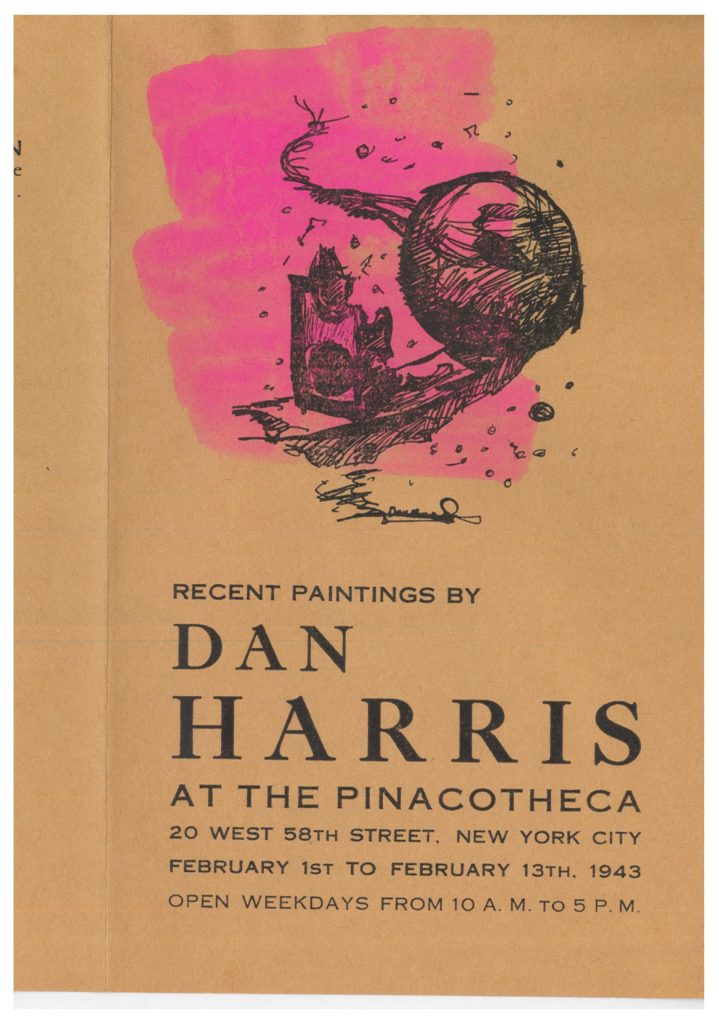
It is such a joy to work in a library and research lesser-known artists. Scouring the library’s artist files and finding information about their work from ephemera is somewhat akin to discovering gold nuggets during the Gold Rush. It was incredibly difficult to choose only a few artists from the six full boxes of files listed under the letter H donated by the Corcoran Gallery of Art. Among the artists selected, Dan Harris, Anne Healy, and Grace Hartigan were particularly interesting, in terms of their work and their biographies.
Born in 1914, Dan Harris studied at the Master Institute of the Roerich Museum and the National Academy of Design in New York. It was challenging to find information on Harris, and his file was a bit thin, containing only a few items, including a brochure of Harris’s first solo exhibition in 1947 at the San Francisco Museum of Modern Art.
But with a little more digging, we found that after he moved to Europe in 1953, Harris changed his name to Zev, meaning ‘wolf’ in Hungarian. While in the United States, Harris focused primarily on abstract and surrealist paintings, whereas beginning in Europe, his work shifted focus to primarily large-scale sculpture. Interestingly, the AA/PG Library also has an example of his illustration work, in the whimsical drawings he included in Eugene Walter’s book “Singerie Songerie: a Masque on the Subject of Lyric Mode.” The Archives of American Art owns a copy of his personal scrapbooks.
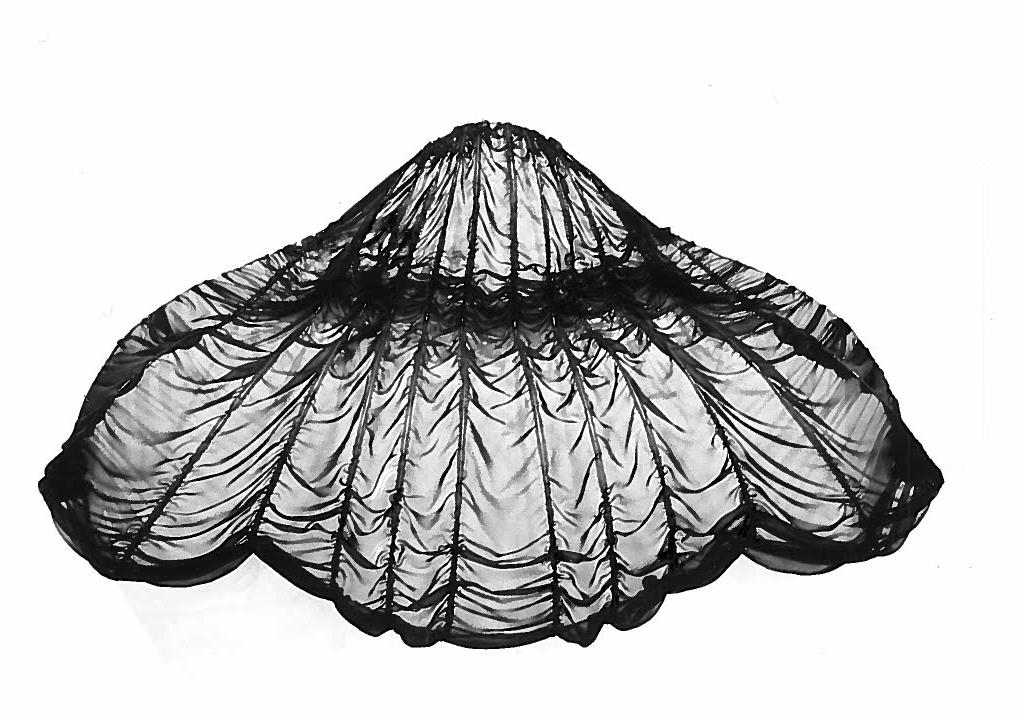
Another artist of note is Anne Healy. After studying English literature and theater at Queens College in New York in the 1960s, Healy became fascinated with air, light, and motion. She experimented with different materials, including flags, banners, pennants, and clothes, to see how their shapes and composition changed when blown by wind.
Healy starting creating indoor and outdoor sculptures using sailcloth that she calls sail sculpture. Healy sews cloth, primarily sailcloth for sail pieces and chiffon for indoor pieces, into formal, geometric shapes at least 50 feet in height, and although her sculpture retains its formal design, its composition continuously changes when blown by wind. Healy’s Corcoran file contains photographs of her sculptures and their installation in galleries, which makes the collection a tremendous resource, especially for viewing the design of her sculptures removed from sources of wind.*
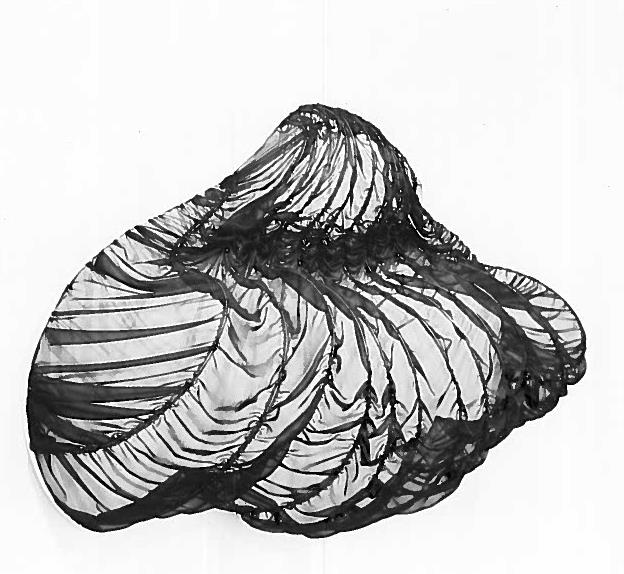
Another artist present in the Corcoran files is Grace Hartigan, a well-known Abstract Expressionist painter, born in Newark, New Jersey in 1922. She was a member of the New York School, a creative group that included Jackson Pollock, Wiliem and Elaine de Kooning, Frank O’Hara, Knox Martin, and many other painters, poets, and writers. Hartigan’s paintings express a liveliness through movement, rhythm, and vivid splashes of color. In her early works she experimented with a freer, gestural technique while her later works tended toward the representational. One of her best-known works, “Summer Street” (1956) was part of the Corcoran collection which is now held by National Gallery of Art.
In the 1960s, Hartigan moved to Baltimore with her husband Dr. Winston Price. In her Corcoran file, there was a flyer promoting Hartigan’s 1979 Artist-In-Residence program at the University of Maryland, College Park. Hartigan was awarded the Distinguished Teaching Award in 1976 by the College Art Association of America, which led her to be the first artist to teach the University of Maryland’s summer painting program. Hartigan led seminars on Twentieth Century art, presented two lectures on abstract expressionism and the development of her own style, and even provided individual professional counseling for all members of the program. Hartigan’s passion for teaching led her to serve as director of Maryland Institute College of Art’s (MICA) Hoffberger School of Painting from 1965 to 2007.
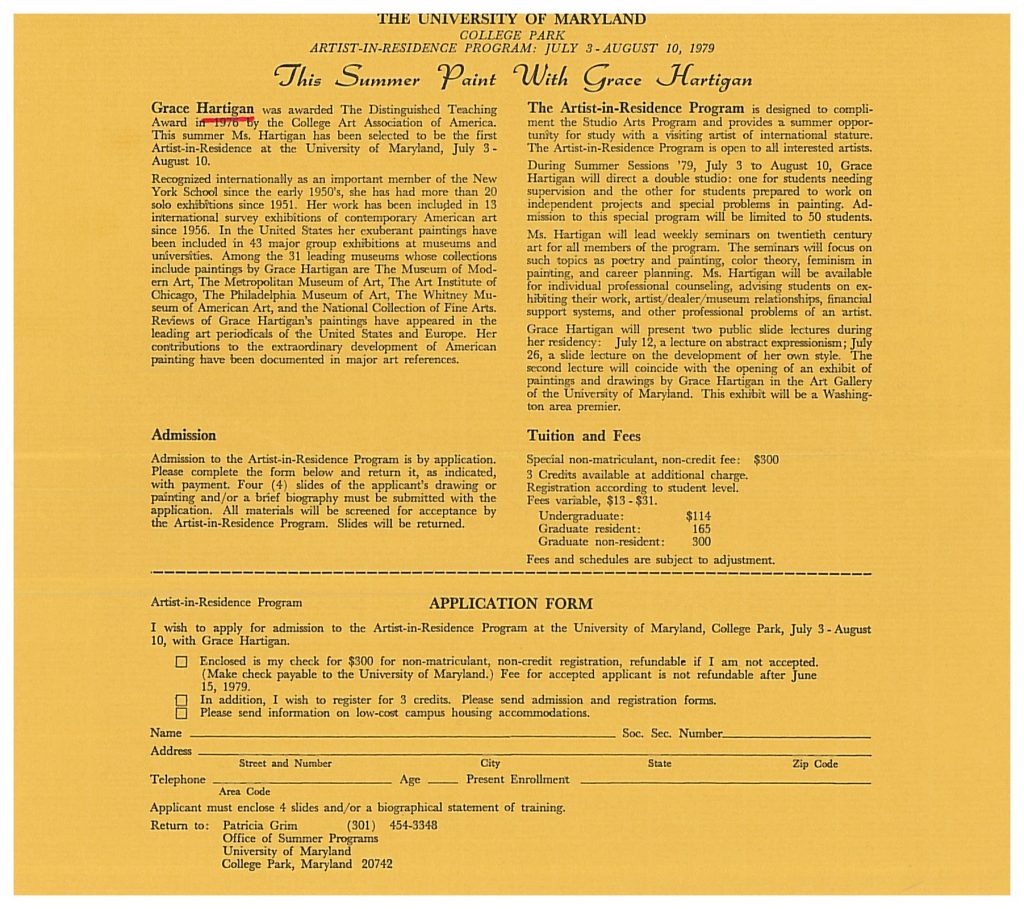
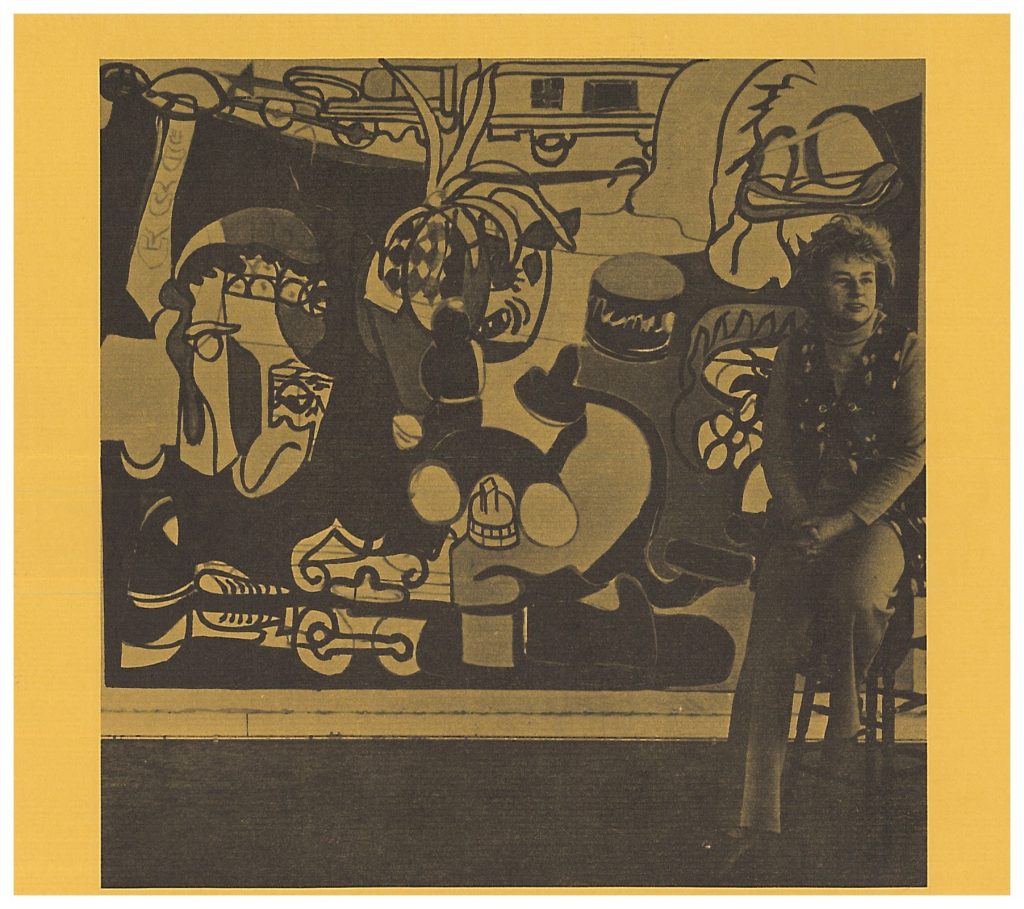
Artists on display for the H’s of the Corcoran are:
Dan Harris (1914-1986), George “Pop” Hart (1868-1933), Grace Hartigan (1922-2008), Charles Hawthorne (1872-1930), Anne Healy (1939-), John Held Jr (1889-1958), Gerard Henderson (1928-2014), Charles Hinman (1932-), Katherine B. Hobbs (1910-1999), Edith Hoyt (1890-1971), William Morris Hunt (1924-1879)
Previous posts in this series:
*This post was edited 8/18/20 to incorporate corrections made by artist Anne Healy.

3 Comments
Katherine Hobb’s was my cousin (my grandmother’s 1st cousin. We were very close. Was her work actually on exhibit March 2018? Thank you so much for featuring this talented sculptor.
I have two corrections to make on my Bio.
1. I am not a Bay Area artist having been born and raised in NYC, Queens. I resided in the Bay Area for 28 years after joining the Art Faculty at UC Berkeley in 1981. Most of my work in sail sculpture: outdoor pieces were done in Manhattan and Brooklyn before I moved to the Coast.
2. My sail pieces were made from sailcloth, mostly Spinnaker cloth, not clothes! My
indoor pieces were made from Chiffon, which is capable of light and shadow when
manipulated and sewn correctly.
Thank you so much for commenting on this post! We have edited the post slightly to incorporate your corrections and we’re sure our audiences will enjoy reading your own descriptions of your life and work.
Best,
Erin Rushing
Outreach Librarian